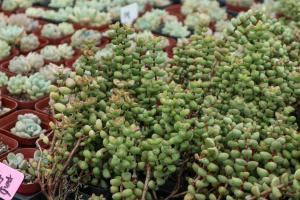Can you plant bulbs in pots in the fall?
Fall is a season of change and growth, and many gardeners wonder if it's the right time to plant bulbs in pots. The short answer is yes, you can plant bulbs in pots in the fall! In fact, planting bulbs in pots can have many benefits, including easier accessibility, better control over soil quality, and reduced risk of pests and diseases.
Choosing the right bulbs
Before you start planting, it's important to choose the right bulbs for your pots. Bulbs come in many varieties, sizes, and colors, and it's important to choose ones that are suitable for the size and depth of your pots. Some popular bulbs for pots include tulips, daffodils, hyacinths, and crocuses. Make sure to choose bulbs that are firm, plump, and free from any signs of damage or disease.
Preparing the soil
Once you've chosen your bulbs, it's time to prepare the soil. Bulbs need a well-drained, nutrient-rich soil that is free from any rocks or other debris. You can use a potting soil mix or make your own by combining equal parts of peat moss, perlite, and vermiculite. Make sure to moisten the soil thoroughly and fill your pots to about three-quarters full.
Planting the bulbs
Now it's time to plant your bulbs! Begin by placing the bulbs on top of the soil, spacing them out evenly and making sure they're not touching each other or the sides of the pot. Cover the bulbs with another layer of soil, making sure to leave about an inch of space at the top of the pot for watering. You can also add a layer of mulch on top of the soil to help retain moisture and keep the bulbs warm.
Caring for your bulbs
Once your bulbs are planted, it's important to give them the proper care they need to thrive. Water your bulbs thoroughly after planting and then keep the soil moist but not waterlogged. If you're planting in a location that doesn't get much rain, you may need to water more frequently. Keep your pots in a cool, dark location, such as a garage or shed, until shoots begin to emerge. Once shoots appear, move your pots to a sunny location that gets at least six hours of sunlight per day.
Enjoying the blooms
With the right care, your bulbs will begin to flourish and produce beautiful blooms in the spring. Once the flowers have finished blooming, you can remove them and allow the foliage to die back naturally. This will help the bulbs to store energy for the next growing season. If you're planting in a location with harsh winters, you may need to move your pots indoors or cover them with a protective layer of mulch to keep them safe from frost.
Planting bulbs in pots in the fall is a rewarding and enjoyable experience that can bring beauty and color to your garden. With a little bit of care and attention, you can enjoy the fruits of your labor for years to come!

 how many times do yo...
how many times do yo... how many planted tre...
how many planted tre... how many pine trees ...
how many pine trees ... how many pecan trees...
how many pecan trees... how many plants comp...
how many plants comp... how many plants can ...
how many plants can ... how many plants and ...
how many plants and ... how many pepper plan...
how many pepper plan...































